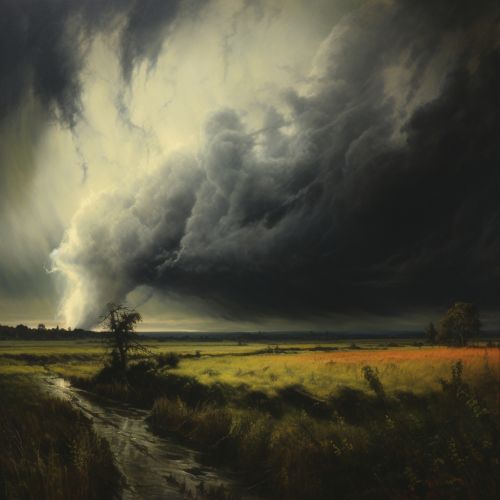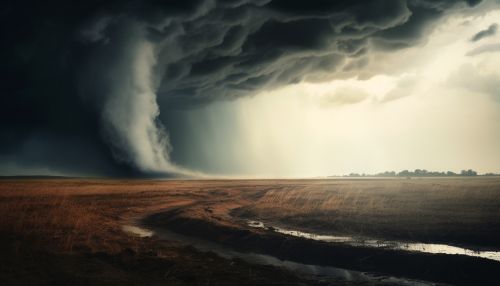Landspout
Introduction
A landspout is a type of tornado not associated with the mesocyclone of a thunderstorm. The name reflects their character, as they look like a weak Florida Keys waterspout over land. Landspouts form during the growth stage of cumulus clouds in certain atmospheric environments.
Formation
Landspouts are typically associated with severe thunderstorms. They form in a process more similar to that of a waterspout than that of a classic tornado. Initially, a strong updraft is created by the heating of the air near the ground. This updraft begins to rotate if it is affected by winds changing speed and direction with height (known as wind shear). This rotation can then be stretched vertically to create a landspout tornado.


Characteristics
Landspouts are usually smaller and weaker than supercell tornadoes, but they can still produce significant damage. They are often rope-like in appearance and can be visible for many miles. Landspouts are usually short-lived, lasting less than 15 minutes, but on rare occasions can persist for up to an hour. They are most commonly observed in the Great Plains of the United States.
Detection
Unlike traditional tornadoes, landspouts are not usually detected by Doppler radar because they do not form from a mesocyclone. Instead, they are often reported by storm spotters or seen in weather photographs. Because of their relatively weak nature and the fact that they occur in rural areas, landspouts are less likely to cause damage than other types of tornadoes.
Safety and Preparedness
Despite their relatively weak nature, landspouts can still pose a threat to life and property. As with all tornadoes, if a landspout is spotted, it is important to seek shelter immediately. This can be in a basement, storm cellar, or an interior room on the lowest floor of a sturdy building. It is also important to stay informed about the weather when conditions are favorable for landspout formation.
